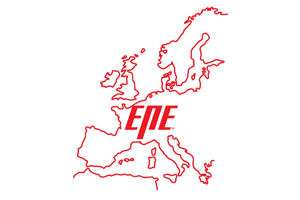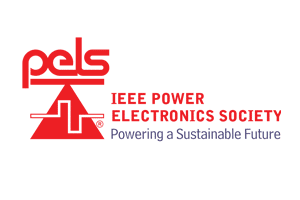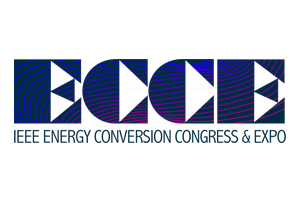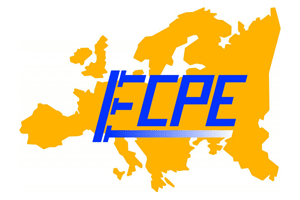The following tutorials are planned for Monday 4 September 2023 during the full day:
(Provisional Programme)
TUTORIAL N° 08
Full Day
(09:30 – 13:00 & 14:00 – 17:30)
Room: 1.07 Fjorden
Advanced control of industrial medium-voltage multi-phase wind power conversion systems
- Ioannis TSOUMAS, ABB Medium Voltage Drives, Untersiggenthal, Switzerland
- Orcun KARACA, ABB Corporate Research, Baden-Dättwil, Switzerland
- Tinus DORFLING, ABB Corporate Research, Baden-Dättwil, Switzerland
Multi-phase medium-voltage generators are increasingly employed in offshore wind parks in order to maximize the generated power per wind turbine and thus minimize the cost per MW of installed power. A characteristic example is the Dogger Bank wind farm, an offshore wind farm being developed at the Northeast coast of England. It will become the world’s largest offshore wind farm with an installed capacity of 3.6 GW. Multi-phase medium-voltage generators with a rated power of 13–14 MW will be installed within the frame of the project. Often in such medium-voltage systems, a back-to-back converter configuration is used. One converter system is connected to the multi-phase generator and delivers power to the converter dc-link(s), whereas a second converter system delivers the power to grid via a multi-phase transformer. Control of these systems is more complicated than their conventional low voltage three-phase counterparts due to the low device switching frequencies.
This tutorial is intended to be a brief course on classical as well as on recently developed and deployed advanced control techniques for industrial medium-voltage multi-phase power conversion systems. The tutorial will focus on three closely related core topics, which are of major interest: generator-side control, grid-side control, and system related aspects. Regarding the generator and grid-side control topics, the attendees will get a strong grasp on control design requirements, traditional control techniques, and more recently developed model predictive control and optimization-based solutions in this area. Emphasis will be put on the requirements that need to be fulfilled in real industrial applications and the challenges related to them. In this regard, the shortcomings of state-of-the-art industrial control approaches and the benefits of the advanced ones will be assessed. Moreover, several important system-related aspects will be covered. In particular, the harmonic transfer mechanisms from the generator to the grid side will be analyzed. Characteristic examples of advanced control and modulation concepts for the suppression of the related harmonics are going to be presented. Furthermore, the topic of control stability at resonant grids is going to be briefly covered.
Tutorial 08: INFORMATION FILE
TUTORIAL N° 10
Full Day
(09:30 – 13:00 & 14:00 – 17:30)
Focus Topic 2
Energy Islands
Room: 1.03 Flyveren
Grid-Forming Converters: Principles and Practices
- Xiongfei WANG, KTH Royal Institute of
Technology, Stockholm, Sweden - Heng WU, Aalborg University, Denmark
- Fangzhou ZHAO, Aalborg University, Denmark
- Bo FAN, Aalborg University, Denmark
- Teng LIU, China Southern Power Grid, Guangzhou, China
The grid-forming (GFM) technology is emerging as a promising approach for massive integration of
inverter-based resources (IBRs) into electrical grids. Being controlled as a voltage source behind an impedance, GFM-IBRs can provide adequate services to enhance the reliability and resilience of the power network, and they also feature higher stability robustness against grid strength variation than conventional IBRs. In recent years, there is a growing consensus on the need of GFM-IBRs in the future power electronic dominated power systems. Many research and development (R&D) efforts have been initiated, by governments, power system operators, energy developers, and vendors of IBRS, on the technical specifications/grid codes, hardware and control solutions for GFM-IBRs.
This tutorial intends to cover both the basics and advances in GFM-IBRs that can fit the requirements of the evolving technical specifications/grid codes. The tutorial will start with the basic principles and typical control architectures of GFM-IBRs, which will be followed by the small-signal modeling, stability analysis, and damping control to guarantee the small-signal stability of GFM-IBRs under various grid strengths. Then, the dynamics analysis of GFM-IBRs under large grid disturbances, e.g., grid faults and phase jumps, will be performed, covering the transient stability analysis, current limitation strategies, as well as anti-islanding detection methods. In the end, perspectives on the prospects and challenges with the grid integration of GFM-IBRs will be shared.
Tutorial 10: INFORMATION FILE
TUTORIAL N° 14
Full Day
(09:30 – 13:00 & 14:00 – 17:30)
Focus Topic 6
Reliability & Artificial Intelligence
in Power Electronics
Room: 1.08 Tunnelen
- Remus TEODORESCU, Aalborg University, Denmark
- Dirk Uwe SAUER, RWTH Aachen University, Germany
- Changfu ZOU, Chalmers University of Technology, Göteborg, Sweden
- Xin SUI, Aalborg University, Denmark
- Weihan LI, RWTH Aachen University, Germany
- Yang LI, Chalmers University of Technology, Göteborg, Sweden
The objective of this tutorial is to define the future battery management system (BMS) capable of fast charging, health management and increased safety. This will be based on an intelligent platform able to estimate and predict the battery states (SOH, SOT), physics-informed neural network (NN) modelling, digital twins, addition of actuators in the form of bypass at cell level health management, and risk assessment.
Tutorial 14: INFORMATION FILE





